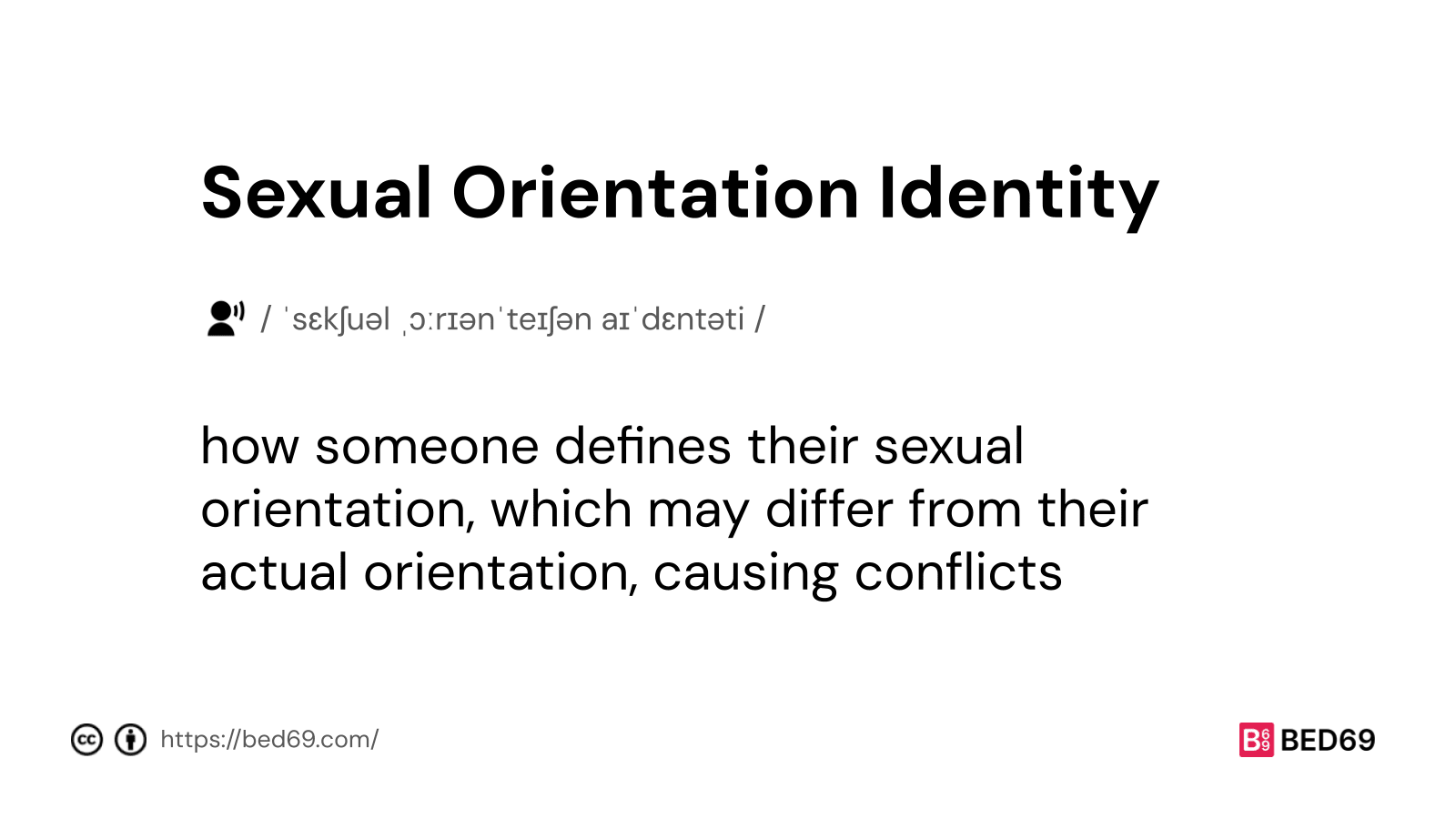What is Sexual Orientation Identity?
Sexual Orientation Identity is how someone sees and talks about their sexual orientation, like being straight, gay, or bisexual. Sometimes, a person’s sexual orientation identity doesn’t match their actual sexual orientation. This can lead to conflicts between who they feel they are and how they identify.
Sexual Orientation Identity pronunciation: / ˈsɛkʃuəl ˌɔːrɪənˈteɪʃən aɪˈdɛntəti /

How Can External Factors Influence
External factors like societal norms, cultural beliefs, family expectations, and religious teachings can significantly influence how a person perceives and labels their sexual orientation. These external pressures may lead individuals to adopt a sexual orientation identity that aligns with societal norms rather than their true feelings. Family acceptance or rejection, peer influences, and media representation can shape one’s understanding of their sexuality.
Moreover, fear of discrimination or social stigma can compel individuals to conceal or misrepresent their sexual orientation identity, leading to inner conflicts and emotional distress. Limited access to inclusive education and support systems can also impact how individuals view and express their sexual orientation. Overall, external factors play a crucial role in shaping how individuals interpret and present their sexual orientation identity, sometimes diverging from their authentic selves.
Navigating Confusion Around Identity Orientation
Navigating confusion around sexual orientation identity can be challenging. Sometimes, how we see ourselves doesn’t align with our true feelings. This mismatch can create inner conflicts and uncertainties about our identity. For instance, a person may identify as straight while experiencing attractions that don’t fit that label.
It’s essential to remember that sexual orientation is a spectrum and can be fluid. People’s feelings and attractions may not neatly fit into predefined categories like straight or gay. It’s okay to feel unsure or conflicted about your sexual orientation identity.
Exploring your feelings and talking to trusted individuals or professionals can help clarify your thoughts. Understanding that sexual orientation identity is personal and unique to each individual can ease the confusion. Embracing self-discovery and accepting yourself for who you are is a crucial step in navigating the complexities of sexual orientation identity.
Explore other interesting terms:
